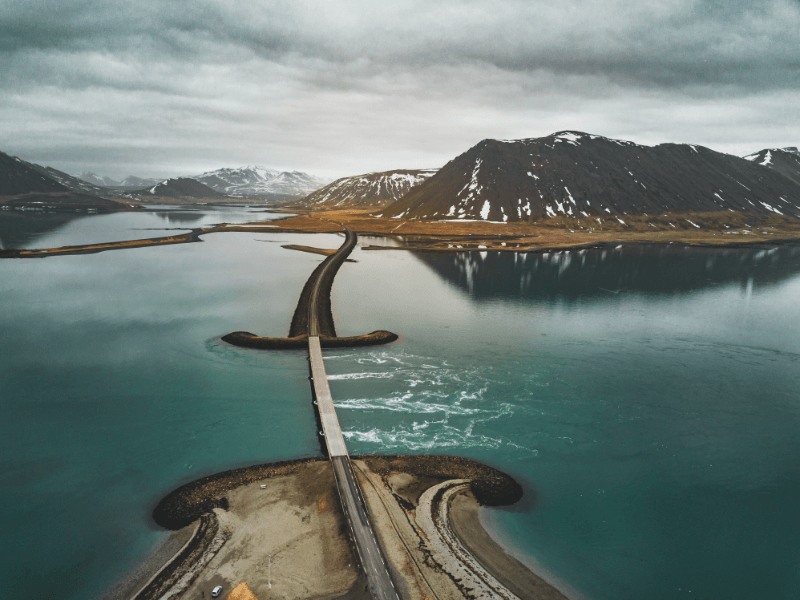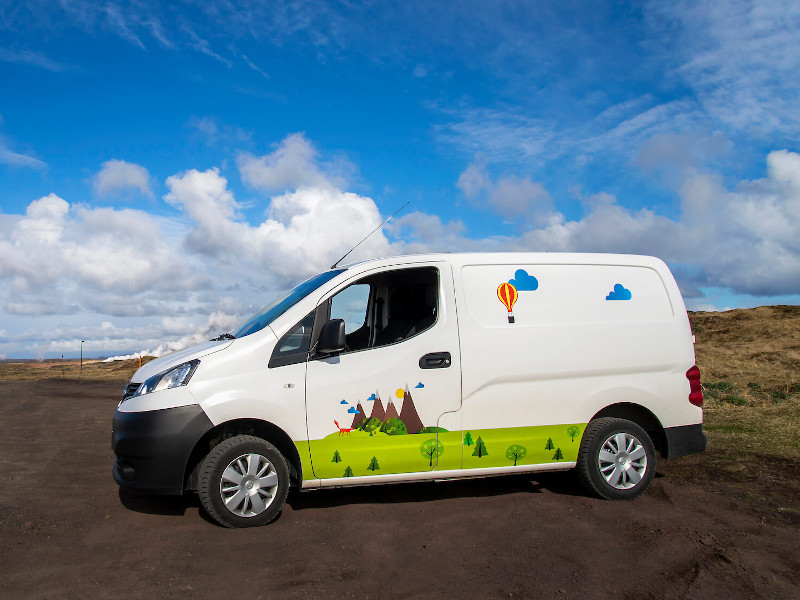Have you ever heard of Norway’s beautiful, decorative folk painting style of rosemaling? This traditional painting technique incorporates colorful and stylized flowers, scrolls and other decorative features.
Let’s explore more about this historical form of Norwegian art, including how rosemaling came to be and the difference between regional rosemaling styles. Plus, you can also find out where you can see some incredible examples of rosemaling in Norway today!
Rosemaling in Norway
A traditional Norwegian style of folk art, rosemaling means ‘rose painting’ or ‘decorative painting’ and consists mainly of painted or wood-carved floral designs. Interestingly, although flowers compose a large part of the rosemaling designs, there are actually no distinctive roses in most rosemaling patterns.
With stylized flowers, scrolls and various decorative flourishes being the main features of rosemaling, this artform is traditionally very colorful, with numerous shades of the same color often featuring in one rosemaling piece.
Plain backgrounds are often used, against which contrasting colors are chosen for the details. Red and blue are favorite background colors for rosemaling artists, although you can sometimes see black and white backgrounds too, depending on the specific regional style.
The bright colors for creating rosemaling art were sourced from locally-found raw materials, such as red from iron oxide in the soil. Blue, on the other hand, was very expensive, so this Norwegian rosemaling paint color was not as widely used. Brushes were similarly made from the available materials, including tail bristles from squirrels.
-compressed.jpg)
What is the History of Rosemaling in Norway?
Originating in remote Eastern Norway rural valleys, rosemaling is a uniquely Norwegian expression of decorative painting.
A younger art form than wood carving or textile arts, rosemaling began during the mid-1700s when upper-class artistic styles from Europe were introduced to Norway. Norwegian artists began to imitate emerging and flamboyant European styles such as Baroque, Regency and Rococo.
These rosemaling artists, as with the majority of Norway’s population, were mainly living in the country’s rural areas during this time period. Most people earned their livelihood by working the land or water, including through fishing, farming and hunting, with many artists working as farmers during the summer.
The tradition of rosemaling in Norway began with artists traveling throughout the country painting churches or decorating the stately homes of wealthy families in exchange for a fee or accommodation. Those artists who became professional rosemalers were trained in what was called a ‘guild’.
With guild-trained rosemalers making their way across the country, various styles of rosemaling began to take hold. Artists experimented with their own ideas, colors and patterns, eventually leading to distinctive rosemaling styles.
What are the Different Styles of Rosemaling in Norway?
As the influence of the guilds diminished with the spread of the artform across the country, various Norwegian rosemaling styles became established in different regions, each with its own characteristic motifs. Regional rosemaling styles remained distinct from one another for many years, mainly due to the lack of transport links between each of these remote valleys.
The three main Norwegian rosemaling styles are Telemark, Rogaland and Hallingdal. Let’s take a look at some more info about each of these main Norwegian rosemaling styles:
Telemark Rosemaling
Widely regarded as Norway’s national rosemaling style, Telemark rosemaling is perhaps the most popular and well-known style of this decorative painting technique.
Originating in the Telemark region in Southern Norway, the rosemaling patterns of Telemark are usually asymmetrical and feature fantastical-looking flowers and decorative scrolls. Both red and Prussian blue are major colors used in Telemark rosemaling.
-compressed.jpg)
Rogaland Rosemaling
Rogaland rosemaling patterns tend to be symmetrical and often feature black, white or blue backgrounds. These rosemaling patterns also contain both scrolls and flowers, as is traditional with all Norwegian rosemaling styles.
A smaller range of colors is used in Rogaland rosemaling, which originated in the county of Rogaland in Western Norway.
-compressed.jpg)
Hallingdal Rosemaling
Famous for its symmetrical designs featuring leaves, flowers and scrolls, Hallingdal rosemaling comes from this beautiful Eastern Norwegian valley. Red is a very popular color in Hallingdal rosemaling and this style often features fantasy flowers.
Scrolls, leaves and decorative flourishes are also prominent features of Rogaland rosemaling.
-compressed.jpg)
Other Norwegian Rosemaling Styles
As well as these three most popular rosemaling styles, other distinct styles of this art form originated in different areas across Norway. Here are some more Norwegian rosemaling styles. If you recognise any of the names of these styles, it’s because each rosemaling style is named after a particular place in Norway from which it originated:
- Agder
- Gudbrandsdal
- Hordaland
- More og Romsdal
- Nordfjord
- Numedal
- Osterdalen
- Raudsaumsmaling
- Setesdal
- Sigdal and Eggedal
- Sogn og Fordane
- Trondelag
- Valdres
- Viksdal
Where to See Norwegian Rosemaling
Inspired to learn more about rosemaling or want to see some rosemaling art for yourself? You’ll be pleased to know that there are some incredible examples of traditional Norwegian rosemaling that you can see during your visit to this magical Nordic nation. Here are a few of our favorites to explore:
Heddal Open-Air Museum, Telemark
One of the best places we recommend stopping by is the Heddal Open-Air Museum in Telemark, which houses the extremely well-preserved Rambergstugo building. Painted in the late 1700s, this masterpiece was created by painter, Olav Hansson, and includes a beautifully-decorated ceiling, walls and furniture.
-compressed.jpg)
Norsk Folkemuseum, Oslo
At the open-air Norsk Folkemuseum, also known as the Norwegian Museum of Cultural History, you can see some original examples of Norwegian rosemaling. With a collection of 160 buildings, exploring the many amazing artifacts and architectural masterpieces that compose this museum is one of the best things to do in Oslo.
-compressed.jpg)
Rosemaling Around the World
After making its way across Norway, rosemaling traveled further westwards, eventually reaching America. With heavy immigration to the US during the early 20th century from some of the areas in Norway where rosemaling originated, this traditional Norwegian painting style made its mark across the Atlantic.
Rosemaling became a popular art form in America, even featuring on decorative Scandinavian folk-painted plates in big department stores in major US cities, including Chicago.
The Future of Rosemaling Art in Norway
By the late 19th century, rosemaling went out of fashion, with artists gravitating towards newer artistic styles. However, many original rosemaling artifacts, including plates, drinking vessels and paintings survive until this day, offering us a chance to view original rosemaling pieces created in Norway.
Today, rosemaling patterns still exist in Norwegian decor as decorative pieces that add a pop of color to the otherwise minimalistic and monotone aesthetic that’s popular across Scandinavia. Subtle floral rosemaling tattoos are also popular among Norwegians.
There are also rosemaling art groups you can join to learn how to paint in this beautiful, traditional style. If you want to try rosemaling for yourself, you can also purchase templates of traditional rosemaling patterns to use when creating your very own artistic masterpiece.
-compressed.jpg)
Experience the Beauty of Norwegian Rosemaling For Yourself!
Inspired to have a go at creating some rosemaling art or see some original pieces of Norwegian rosemaling for yourself? Get started with planning your own dream Norway vacation by taking a look through our range of affordable and reliable campervan rentals in Norway.
Exploring the remote valleys, beautiful coastlines and snowy mountains of this magical country couldn’t be easier than by taking a wonderful campervan road trip. Give yourself the ultimate flexibility and freedom by hiring your very own campervan in Norway, taking your home with you on the road – perfect!



 By
By 






